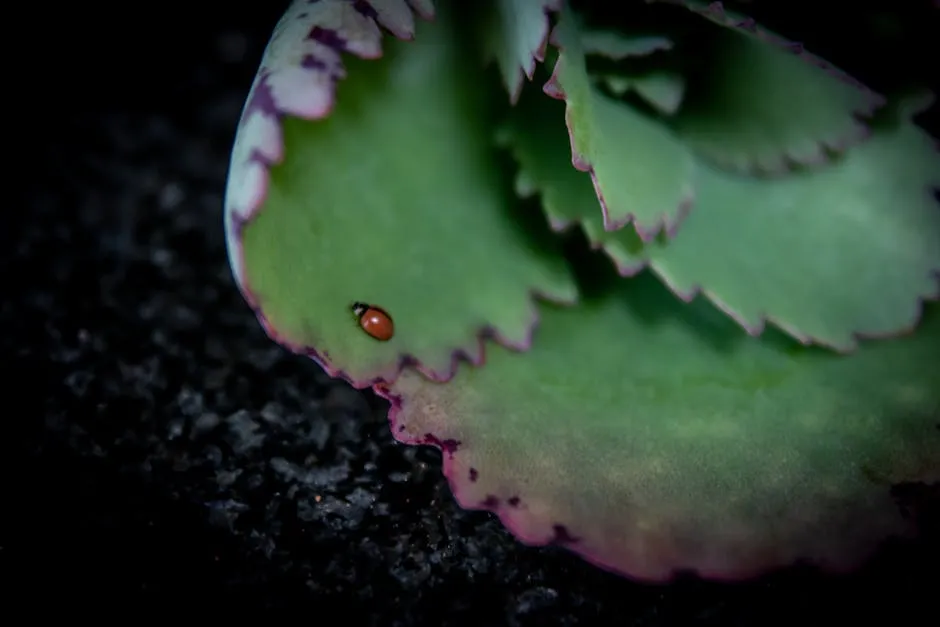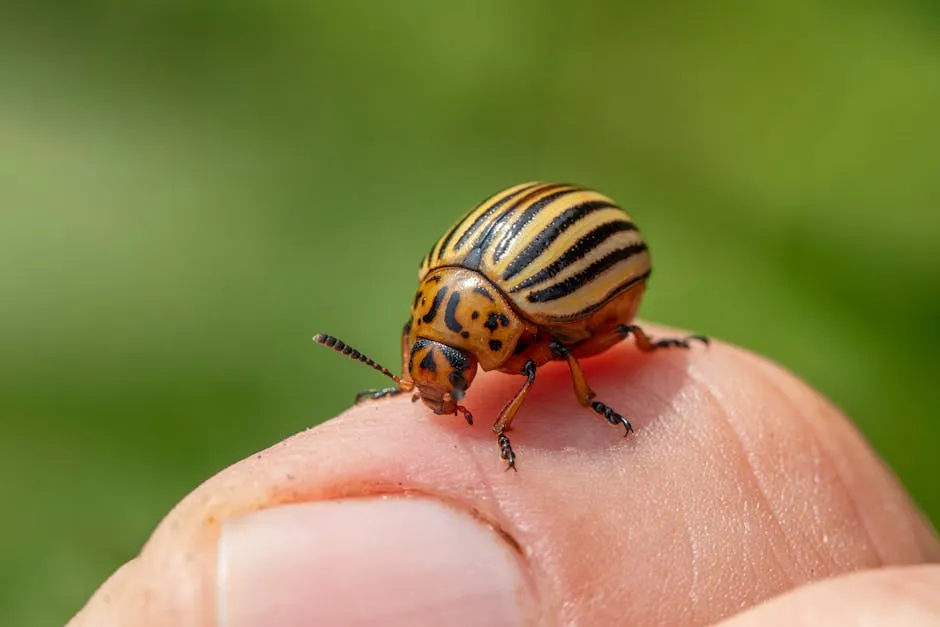
Why Are There So Many Ladybugs?
Introduction
In the fall, you might have noticed your home invaded by small, colorful beetles that seem to be everywhere. Are they good luck charms or just unwelcome guests? Spoiler alert: they’re more than just a pretty face. This article dives deep into the fascinating world of ladybugs and their less-known counterparts—Asian lady beetles. From their seasonal behavior to what they mean for your home, let’s unravel the mystery behind these charming insects.
Have you ever walked into your living room, only to stumble upon a small army of ladybugs? It’s like they threw a surprise party, and you weren’t invited! These little critters often swarm our homes as the weather cools down, leading to questions about their sudden appearance. But fret not! While some might consider them pests, ladybugs actually play a vital role in our ecosystem.
So, why do these vibrant beetles choose our cozy abodes for their winter hideouts? It boils down to a combination of instinct and environmental factors. As temperatures drop, ladybugs—specifically the Asian lady beetles—head indoors, searching for warmth and safety. Their colorful exteriors may make them look harmless, but their behavior can be quite fascinating. Let’s take a closer look at this seasonal phenomenon and find out what makes these beetles tick.

Summary
Ladybugs, often perceived as lucky insects, tend to swarm in homes during the fall. However, what many people actually encounter are Asian lady beetles, which seek shelter as temperatures drop. The increase in their numbers can be attributed to various factors, including their instinct to hibernate, a predilection for warmth, and the release of pheromones that draw in more of their kind. While they are mainly harmless and contribute positively to gardens by controlling pests, their presence in large numbers can be annoying.
Understanding their behavior, origins, and methods for prevention can help homeowners manage these seasonal visitors more effectively. This article will explore the types of ladybugs, their behavior, safety concerns, and effective prevention methods, shedding light on why you might be seeing so many of them lately.
As the days grow shorter and the chill in the air becomes palpable, ladybugs are on the move. They aren’t just wandering aimlessly; they’re searching for a snug spot to hibernate. This search can lead them straight into your home, where they might become an unexpected housemate. While they are generally beneficial to gardens, their indoor antics can make you wish they’d chosen a different venue for their winter retreat.

Speaking of creating cozy spots, you might want to enhance your garden to attract more ladybugs. Consider planting flower seeds that attract ladybugs. These little helpers will thank you for the extra food source and keep your garden thriving!
Why Do Ladybugs Enter Homes?
As the temperatures dip, these colorful beetles seem to make a beeline for our homes. But why? It’s all about the cozy vibes! Ladybugs are drawn to warmth and light, making your home a perfect hibernation spot. They seek out sunny sides of buildings, itching to escape the chill. If your home is anything like mine, those sunlit areas are prime real estate.
Not only do they crave warmth, but ladybugs also have a secret weapon: pheromones. When one ladybug finds a comfy nook, it releases these chemical signals, essentially sending out an invitation. This is like a neon sign saying, “Hey, this place is great for a winter sleepover!” So, if you’re wondering why your living room feels like a ladybug convention, now you know!
Ladybugs are not just random intruders; they’re following their instinctual need to find shelter. Think of it this way: when the temperatures drop and the snacks (a.k.a. aphids) become scarce, these beetles are simply looking for a warm, safe spot to hibernate. So, your home becomes their go-to fortress as they prepare for the long winter ahead.
While their presence can be a tad annoying, remember they come with good intentions. So, next time you spot one, you can appreciate its quest for warmth instead of simply viewing it as an unwelcome guest!

What to Do If You Already Have Ladybugs
Removal Techniques
So, you’ve got a ladybug party happening in your home? Don’t panic! Let’s talk about some safe and effective ways to handle this colorful invasion.
First off, the vacuum cleaner is your friend. But hold up! You’ll want to use a special technique to avoid turning your vacuum into a ladybug graveyard. Grab a knee-high nylon stocking and attach it to the vacuum hose. This way, the ladybugs get to enjoy a ride without meeting their end. Once you’ve vacuumed them up, cart them outside and let them go free. They’ll appreciate the chance to find a more suitable hibernation spot.
Another gentle method involves a broom. Use it to sweep the ladybugs into a dustpan. This is a low-tech solution that works wonders without causing harm. Just remember to take them outside promptly! Leaving them in the dustpan might cause them to feel like they’re stuck in a ladybug limbo.
If you prefer a more hands-off approach, consider using an insect catching jar. Catch a few ladybugs and let them hang out in the jar for a bit. Just be sure to set them free outside afterward. It’s a win-win situation: you keep your home tidy while giving the ladybugs a chance to find their way back to nature.
Now, if your ladybug situation has morphed into an infestation, it might be time to call in the professionals. Pest control experts can assess the severity of the problem and offer targeted solutions. They’ll help you restore your peace of mind without harming these little creatures.

What NOT to Do
Now that you know how to handle ladybugs, let’s chat about what you should avoid. There are some common myths floating around that can lead to unnecessary chaos.
First, never resort to using harmful chemicals to exterminate ladybugs. Not only is this a bad idea for the environment, but it can also be toxic to your pets and family. Plus, ladybugs are more beneficial than harmful. They’re natural pest controllers, helping to keep aphids at bay in your garden. Why would you want to eliminate that?
Another myth is that ladybugs hibernate in your walls. While they do seek shelter, they aren’t damaging your home in the process. So, no need to tear down your walls looking for the culprits!
Lastly, some folks believe that squishing ladybugs will send them running. Spoiler alert: they might release a yellowish fluid that can stain surfaces. So, unless you’re keen on cleaning up a mess, keep your hands off!
Instead of panicking or using harsh measures, embrace the ladybug presence. After all, they’re just looking for a warm spot to hibernate. Keeping a cool head will help you manage the situation effectively, allowing you to coexist with these colorful guests.

Conclusion
Ladybugs, particularly the Asian lady beetles, are more than just colorful intruders; they are a seasonal phenomenon that reflects the changing nature of our environment. By understanding their behavior and how to manage their presence, you can appreciate these little guests for the role they play in our ecosystem while keeping your home comfortable. So next time you see a ladybug, remember—it’s just looking for a warm spot to hibernate!

FAQs
Why do ladybugs swarm in the fall?
As autumn approaches, you might spot ladybugs clustering together, but why the swarm? It’s all about survival! These tiny beetles are on the hunt for a warm shelter to ride out the cold months. When the temperature drops, they instinctively seek out cozy nooks in homes and buildings, often finding small crevices or sunny sides of structures perfect for hibernation. During this time, they enter a state called diapause, which is like a deep sleep. Think of it as a beetle version of curling up under a warm blanket! Ladybugs release pheromones that signal to others that this is a safe place to settle in. So, if your house seems to be the popular hangout spot for ladybugs come fall, it’s because they’re all looking for that same cozy retreat!
Can ladybugs damage my home?
The good news is that ladybugs are not destructive pests. They don’t munch on wood, fabrics, or your precious heirlooms. However, in large numbers, they can be a nuisance. Their secretions might leave stains on surfaces, and if crushed, they can emit a rather unpleasant odor. To minimize the inconvenience, focus on prevention. Seal cracks and gaps around windows, doors, and walls. This keeps ladybugs out and ensures your home remains a sanctuary of peace. If they do make it inside, remember that a gentle vacuuming can safely remove them without harm!
Are ladybugs good for gardens?
Absolutely! Ladybugs are nature’s tiny pest control agents. These beetles feast on aphids, mealybugs, and other pesky critters that wreak havoc in gardens. By keeping these harmful insects in check, ladybugs help plants thrive and reduce the need for chemical pesticides. Their presence is a boon for any garden enthusiast. Not only do they keep plants healthy, but they also support the overall biodiversity of your garden. So, if you spot a ladybug in your flower bed, consider it a feather in your gardening cap!
How long can ladybugs survive indoors?
Once inside, ladybugs can survive for weeks or even months, depending on conditions. They thrive in warm environments but can struggle without food. If they run out of their favorite snacks—aphids—they might start searching for alternative sources, which can include fruits or even your indoor plants. Their lifespan varies, but in ideal conditions, they can live up to a year. To give them the best chance, ensure your home has some favorable hiding spots, like cracks and crevices, where they can stay warm and protected. Just remember, they’re not there to stay forever!
What are effective home remedies for ladybug removal?
If ladybugs have taken up residence in your home, don’t fret! There are several safe and practical remedies to encourage them to relocate. 1. **Vacuum**: Use a vacuum with a nylon stocking over the nozzle. This captures ladybugs without harming them. Once collected, release them outside where they can find a new home. 2. **Natural Repellents**: Scents like citrus, clove, or bay leaf can deter ladybugs. Spraying diluted essential oils around entry points can disrupt their pheromone trails and keep them at bay. 3. **Seal Entry Points**: Check for cracks around windows and doors. Sealing these gaps not only keeps ladybugs out but also helps with energy efficiency. 4. **Remove Attractants**: Keep your home tidy! Ladybugs are attracted to clutter and food sources. Regular cleaning can help minimize their appeal. 5. **Professional Help**: If the problem escalates, consider consulting pest control experts. They can provide tailored solutions to ensure your home remains ladybug-free. With these tips, you can manage any ladybug situation with ease!
Understanding Ladybugs and Their Behavior
What Are Ladybugs?
Ladybugs, or lady beetles, belong to the Coccinellidae family. They are colorful beetles with round bodies, often red or orange with black spots. Most people picture the classic seven-spotted ladybug, but there are over 5,000 species worldwide! Interestingly, the Asian lady beetle, often mistaken for the common ladybug, is gaining popularity—especially in homes during the fall.
Asian lady beetles are slightly larger and can be orange or yellow. They sport a distinctive black “M”-shaped marking behind their head. This makes them stand out from their smaller, red counterparts. While all ladybugs share similar insect diets, their behavior and habitats can differ significantly.

Seasonal Behavior of Ladybugs
As warm summer days fade, ladybugs prepare for winter. They instinctively search for cozy spots to hibernate. This is when they become more visible, often clustering together in large numbers. In the fall, their quest for warmth leads them to our homes, where they can find refuge from chilly temperatures.
During this time, ladybugs enter a state called diapause, a form of hibernation. They slow down their metabolism, conserving energy until spring. You might find them sunning themselves on the sunny sides of your house, looking for that perfect nook to settle in for the winter.

Why Do Ladybugs Enter Homes?
So, why do ladybugs choose your home? It’s all about the vibes! They are irresistibly drawn to warmth and light. If your house has sunny spots, it becomes a prime target for these little beetles.
Moreover, ladybugs communicate through pheromones. When one ladybug finds a cozy hiding spot, it releases these chemical signals. This calls other ladybugs, creating a mini-ladybug convention in your living room!
As they seek shelter from the cold, their instincts kick in. They’re not trying to invade your space out of spite. They simply want a safe haven to ride out the winter. While their presence might annoy some, they are just following their natural instincts.
Next time you see a ladybug, remember it’s just trying to find a warm place to snuggle up. And who could blame them? Everyone wants a comfy spot when the winter chill sets in!

If you’re curious about the reasons behind ladybug swarming, you can explore more about why are there so many ladybugs in your home during the fall.
And if you’re looking for a way to make your home more inviting for these little guests, consider adding some ladybug-themed home decor to your space. It’s a cute way to celebrate their presence!

Please let us know what you think about our content by leaving a comment down below!
Thank you for reading till here 🙂
All images from Pexels




